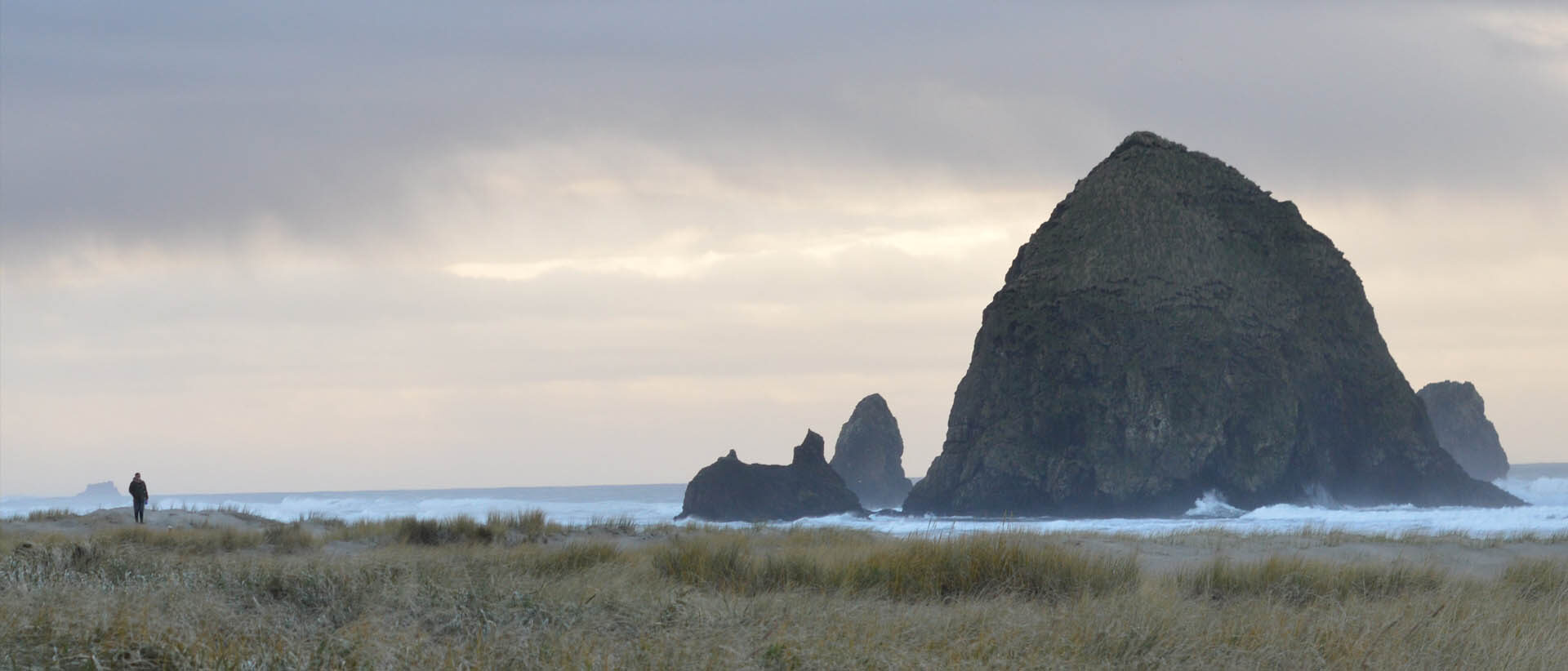Haystack Rock at the Oregon Islands National Wildlife Refuge


On January 8, 1806, William Clark and a few other men of the Lewis and Clark Expedition had arrived in the area searching for a blue whale that the local tribes had reported to them. A few days later, when the men returned to Fort Clatsop, expedition member Joseph Whitehouse who had remained behind with Meriwether Lewis and the rest of the party, recorded their report in his journal on January 10, 1806.
Visitors seeking natural beauty in Oregon should make Haystack Rock an essential stop on their journey through The Beaver State. The Haystack Rock formation serves as an iconic spot to view Oregon’s coastal beauty and natural wonders, giving visitors the opportunity for photos and beach strolls with a beautiful and quintessentially Oregon view.
Rising 235 feet above the shoreline, Haystack Rock is an irregular basalt formation that was first created some 17 million years ago as lava flowed through the old Columbia River drainage system and intruded into soft marine sediments. Erosion and geologic uplift eventually revealed it and the many other large stone formations along the coast. Haystack Rock is a 235-foot sea stack, sometimes claimed locally to be the third-tallest such “intertidal” structure in the world. A popular tourist destination, the monolithic rock is adjacent to the beach and accessible by foot at low tide. The Haystack Rock tide pools are home to many intertidal animals, including starfish, sea anemone, crabs, chitons, limpets, and sea slugs. The rock is also a nesting site for many sea birds, including terns and puffins.
Today, Haystack Rock is protected as one of Oregon’s seven Marine Gardens. It’s a popular location for tidepooling and, at low tide, visitors can walk right up to the enormous rock. A wide variety of birds can also be seen year-round. Gray Whales, Humpback Whales, Orcas, and Sperm Whales are often spotted from December to March. Visitors are encouraged to bring binoculars, spotting scopes, and cameras if they want to spot some of the giant creatures out in the water.
The Haystack Rock Awareness Program presents interpretive programs from February to late October. Program schedules are available from City Hall, local businesses, and the Chamber of Commerce Information Center. For more information on visiting, see the city’s website at Oregon Coast Haystack Rock in Cannon Beach Oregon.
Distance Unit: